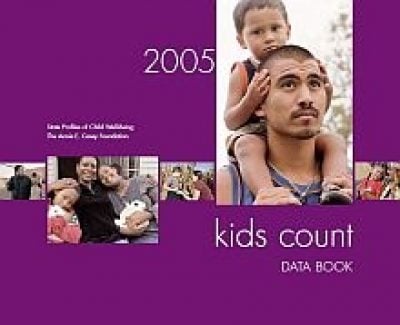Teen Birth Rate
Between 2000 and 2002, the teen birth rate fell from 48 births to 43 births per 1,000 teenage girls ages 15 to 19, reaching a record low. The decline was reflected among every major racial and ethnic group.

The KIDS COUNT Data Book is an annual publication that assesses child well-being nationally and across the 50 states. The 2005 report begins with an essay, "Helping Our Most Vulnerable Families Overcome Barriers to Work and Achieve Financial Success," which explores in-depth four factors that contribute to persistent unemployment among parents: substance abuse, domestic violence, a history of incarceration, and depression. Too often, adults face more than one of these barriers simultaneously, yet programs and services -- and their funding streams -- typically address them in isolation. The essay provides research findings about how each of the barriers impacts parental employment along with examples of innovative programs across the country that help parents overcome drug abuse, domestic violence, prior incarceration and depression and to transition to the workforce. It concludes that the most successful interventions are integrated, flexible, and comprehensive in their scope.
The remainder of the report provides national and state data on 10 indicators that reflect a range of factors affecting child well-being, particularly health, adequacy of income, and educational attainment. Based on a composite index of the 10 indicators, the three highest ranked states for overall child-being were New Hampshire, Vermont and Minnesota; the three lowest ranked states were Mississippi, Louisiana and Alabama. The 2005 Data Book incorporates numerous improvements (including changes in some variables and data sources) in comparison to previous editions.
Substance abuse, domestic violence, prior incarceration and depression are some of the biggest obstacles to employment for low-income parents, yet programs and services tend to treat them in isolation even though they frequently co-occur.